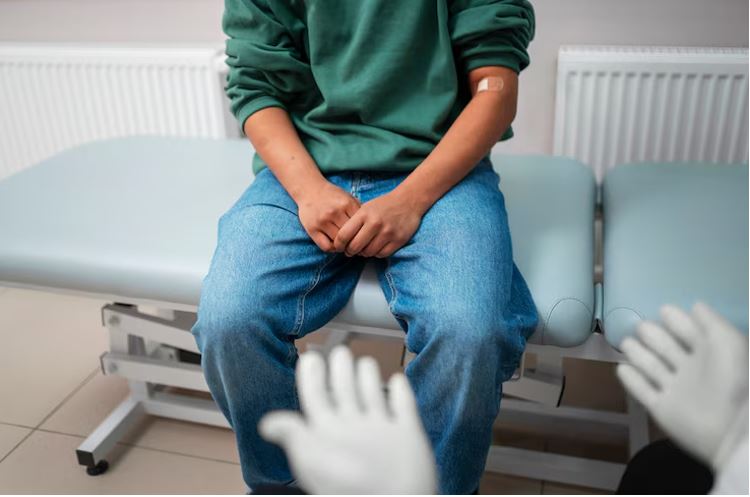Peyronie’s disease is a condition that affects men, typically in midlife, and involves the development of fibrous scar tissue inside the penis. This tissue causes curved, painful erections and, in more advanced stages, can interfere with sexual function and significantly affect quality of life. While the condition is not uncommon, many men hesitate to seek help until the symptoms are severe. However, early treatment can make a meaningful difference in managing the symptoms and potentially avoiding surgery.
If you’re exploring Peyronie’s disease treatment in UK, understanding the benefits of early intervention is essential. In this article, we will look at what causes Peyronie’s disease, common symptoms, the importance of timely care, and the available treatment options—both non-surgical and surgical.
Understanding Peyronie’s Disease
Peyronie’s disease occurs when plaque or scar tissue forms under the skin of the penis. While the exact cause isn’t always clear, it is often linked to trauma or repeated injury during intercourse or physical activity. The body’s natural healing response to this trauma may lead to abnormal scar tissue formation, resulting in curvature or indentation during an erection.
Not every case of curvature is Peyronie’s disease. A mild, naturally occurring bend is considered normal and not usually problematic. However, when curvature is accompanied by pain, loss of penile length, or difficulty with penetration, it may indicate the need for medical attention.
Common Symptoms of Peyronie’s Disease
Peyronie’s disease symptoms vary from person to person but typically include:
- Bending or curvature of the penis during erection
- Pain in the penis (with or without an erection)
- Palpable lumps or plaques beneath the skin
- Narrowing, shortening, or hourglass deformity of the penis
- Erectile dysfunction or difficulty with penetration
In some cases, the condition may worsen over time, particularly without treatment. This is why early diagnosis and management are crucial.
The Importance of Early Diagnosis
Early-stage Peyronie’s disease, known as the acute phase, is when symptoms begin to develop. During this phase, inflammation is still present, and the plaque is still forming. This is the optimal time for intervention, as some treatments may be more effective before the plaque becomes calcified or stable.
Here’s why early treatment is essential:
Slows or Prevents Progression
Starting treatment in the acute phase may prevent the disease from worsening. Once Peyronie’s disease progresses to the chronic phase, symptoms stabilise, but severe curvature and penile shortening may have already set in.
Reduces Pain and Discomfort
Pain is more common in the early stages and often resolves on its own over time. However, certain medications and therapies can reduce pain and inflammation during the acute phase, making the condition easier to manage.
Improves Long-Term Outcomes
The earlier the intervention, the higher the chances of restoring or preserving erectile function and natural shape. Some non-surgical treatments are only effective in the early stages, and delaying care may result in needing surgical correction later.
Supports Psychological Wellbeing
Peyronie’s disease can significantly affect mental health, confidence, and relationships. Early diagnosis allows men to access support and treatment before emotional distress takes hold.
Non-Surgical Peyronie’s Disease Treatments

For men seeking Peyronie’s disease treatment in the UK, various non-invasive options are available, especially in the early stages:
Oral Medications
Medications like pentoxifylline may help reduce inflammation and slow plaque development, though their effectiveness varies.
Penile Traction Therapy (PTT)
Traction devices gently stretch the penis over time. When used regularly, they may help improve curvature, length, and overall shape, especially when combined with other treatments.
Intralesional Injections
These involve injecting medication directly into the scar tissue to break down the plaque. The most commonly used drugs include:
- Collagenase Clostridium Histolyticum (Xiaflex) – Approved for moderate to severe curvature and used in a series of treatments.
- Verapamil or Interferon – Off-label options used in UK clinics with some success in reducing curvature and plaque size.
Shockwave Therapy
Low-intensity extracorporeal shockwave therapy (Li-ESWT) may reduce pain and improve symptoms in some men, although evidence of its effectiveness is still growing.
When Surgery Becomes Necessary
Surgery is usually reserved for men with stable, chronic Peyronie’s disease who experience severe curvature or functional issues. Types of surgery include:
- Plication – Shortens the opposite side of the penis to straighten the bend. Suitable for those with good erectile function.
- Grafting – Removes the scar tissue and replaces it with graft material. This method is used for more complex deformities but carries a higher risk of erectile dysfunction.
- Penile Prosthesis – Implanted in cases where erectile dysfunction is present and other treatments have failed. It straightens the penis and restores rigidity.
Seeking Help from Specialists
Men affected by Peyronie’s disease should consider visiting a urologist or men’s health clinic experienced in sexual and penile health. In the UK, many private clinics offer dedicated Peyronie’s disease treatment options with access to non-surgical and surgical solutions.
When consulting a specialist, it’s helpful to:
- Be open about your symptoms and concerns
- Discuss the onset and progression of the curvature
- Ask about the pros and cons of each treatment option
- Understand realistic outcomes and potential side effects
Psychological Support Is Just as Important

Aside from physical symptoms, Peyronie’s disease can cause emotional strain, including anxiety, depression, and relationship difficulties. Seeking counselling or joining support groups can be beneficial. Many men find reassurance in learning they’re not alone and that effective treatment is available.
Conclusion
Peyronie’s disease is a manageable condition when detected and treated early. During the initial stages, non-surgical options such as injections, traction therapy, and medication can help slow progression, reduce pain, and even correct the curvature. As the condition advances, surgical intervention may become necessary, but early treatment often improves long-term outcomes.
If you’re noticing any signs of penile curvature, discomfort, or lumps, don’t delay. Consulting a qualified urologist for Peyronie’s disease treatment in the UK can help you take control of the condition before it affects your quality of life further.
You May Also Read: Effective Strategies for Dental Website Marketing in 2025




